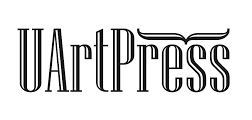„Realizmusról, naturalizmusról és más badarságokról”. Gellért Endre 1952-es „Ványa bácsi” rendezése
Keywords:
theatre history, scenic traditionAbstract
“On Realism, Naturalism and Similar Nonsense”. Endre Gellert’s 1952 interpretation of "Uncle Vanya"
The 1952 performance of Uncle Vanya, directed by Endre Gellert, is the crowning achievement of Hungarian Realist theatre, and it lives on in the collective memory of generations as a flawless masterpiece. It is remembered not solely as an aesthetic experience, but as a socio-political statement. In the Rákosi era, the repertoire of the Budapest national theatre was noticeably less constrained by ideology than that of other theatres in the capital city. The theatre’s intendant Tamás Major has completed his compulsory studies at Communist party school by 1949, and his fervent and committed declarations draw attention away from the new performances, as Major has an active role in Party politics, and asserts the interests of the theatre in daily Communist debates. The remembrance of the performance transforms the play speaking of the unbearable burden of existence in the difficult years of the Rákosi era into something akin to the language of political theatre. In my paper, I analyse the acting traditions of a theatre under dictatorship, an artistic practice tied to the acting methods and the ideals of realism.
References
(Anon), Ványa bácsi, 1952. Színház és mozi, 1952. máj. 2., 7.
CSEHOV, Anton, 1920, Vanja bácsi: Jelenetek a falusi életből négy felvonásban. Fordította Jób Dániel. Budapest: Athenaeum.
CSEHOV, Anton, 1950, Drámai művei. Fordította KOSZTOLÁNYI Dezső et alii, Budapest: Franklin.
DEMETER Imre, 1960, Ványa bácsi: Csehov színműve a Katona József Színházban, Film Színház Muzsika, 1960. márc. 4., 10–12.
GELLÉRT Endre, 1952–1960, Ványa bácsi. Fordította HÁY Gyula. Rendezőpéldány. PIM–OSzMI, kézirattár, Molnár Gál Péter-hagyaték, GY/1863. 7. (Felújítás 1960. február 24-én történt, a borítón egyértelmű jelek arra, hogy az 1952-es példányt használják. A felújítás rendezőpéldányát készítette Bodnár Sándor.
GELLÉRT Endre, 1952, Előjegyző zsebnaptár az 1952. évre, február 14-től bejegyzés. OSzMI kézirattár, Molnár Gál Péter hagyaték. Gy/1863.
GELLÉRT Endre, 1981, Helyünk a deszkákon. Budapest: Népművelési Propaganda Iroda.
GYERGYAI Albert, 1968, A Nyugat árnyékában: Tanulmányok – Arcképek és emlékezések – Kritikák. Budapest: Szépirodalmi Könyvkiadó,
KOSZTOLÁNYI Dezső, 1978 (1920), Ványa bácsi (1920). In: KOSZTOLÁNYI Dezső, Színházi esték I. Budapest: Szépirodalmi Könyvkiadó, 325–327.
LENGYEL György, 2017, Kortársuk voltam. Budapest: Corvina Kiadó–OSzMI.
LIENCOURT, François de, 1961. „Le théâtre, le pouvoir et le spectateur soviétiques”. Cahiers du monde russe et soviétique 2, 3. sz. (1961): 277–298.
MAJOR Tamás, 1947, Előadása a Szovjetunióban szerzett tapasztalatairól. 1947. nov. 4. (PIM–OSzMI, kézirattár, 2017.39.1.), 1947. nov. 11. (PIM – OSzMI, kézirattár, 2017.39.2.), 1948. nov. 18. (PIM–OSzMI, kézirattár, 2017.42.2.), 1948. dec. 11. (PIM–OSzMI, kézirattár, 2017.42.3.)
RADNAI Annamária (ford. és vál.), 2002. Csehov szerelmei: Lika Mizinova, Olga Knyipper és Anton Pavlovics Csehov levelei. Budapest: Magvető Kiadó.
SPIRÓ György, 2012. „Csehovot fordítva”. In: SPIRÓ György, Magtár. Budapest: Magvető Kiadó.
ZÁGONYI Ervin, 1984. Kosztolányi Csehov-élménye nyomában. Irodalomtörténet 66 (új folyam 16), 2. sz. (1984): 304–334.
Downloads
Published
How to Cite
Issue
Section
License

This work is licensed under a Creative Commons Attribution 4.0 International License.
CC-BY permits any use, reproduction, distribution, self-archiving and citation of the work as long as the authors are credited. The complete bibliographical data of Symbolon Journal must also be indicated, which you can find in the How to cite section on this page. If possible, please also place a link leading to the original publication.
Copyright of the paper belongs to the author(s).




